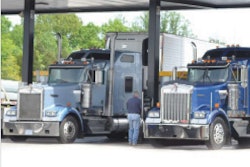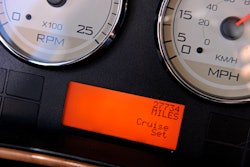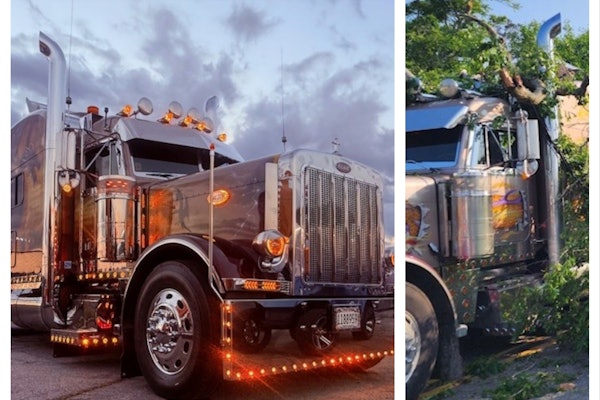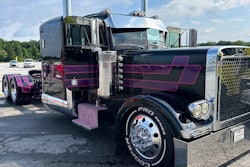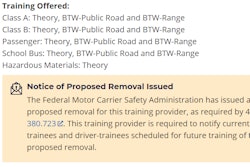
Want to see all the other Overdrive fuel tips? Click here to see them all
50 Optimize fuel purchases.
Online software systems help maximize fuel savings by finding the cheapest locations to buy fuel. Systems such as this one from ProMiles compare fuel prices minus IFTA fuel taxes. This is the only fair way to compare fuel prices because owner operators get credit for IFTA taxes paid at the pump and since tax rates vary widely by state. These optimal fuel plans can save 4 to 11 cents a gallon. The systems factor in tank capacity, current fuel levels, truck stop preferences and other variables.
51. Consolidate fuel purchases.
Fuel card providers have negotiated discounts with truck stops, but just as important, drivers and fleets can use the data they collect to compare and to consolidate fuel purchases to negotiate more savings.
52. Don’t rely on pump price.
Check online sources for information on state fuel taxes. Only after subtracting taxes from the pump price do you know the true price of the fuel.
53. Get the best possible fuel surcharge.
Surcharge terms differ in various ways, such as payment for empty miles. Make sure you know how yours is calculated. If it’s not fair, consider leasing elsewhere.

54. Minimize AC use.
Running the air conditioner delivers a 2⁄10 to 4⁄10-mpg hit.
55. Maintain your diesel particulate filter.
Much like a clogged catalytic converter on your car, a plugged DPF hampers exhaust flow. It can lead to compression or combustion problems if left untreated.
56. Keep up with oil and oil filter changes.
A well-maintained engine not only lasts longer, but has an edge on fuel efficiency.
57. Keep belts at proper tension.
Even slight slipping creates parasitic horsepower loss. Make sure all belts are properly tightened and in good condition.
58. Maintain fuel filters.
Clogged filters make the engine run rough and work harder. Replace according to manufacturer’s recommendation.
59. Switch to a daycab and use motels.
If your operation doesn’t require too many over-the-road overnight stays, not only would you save on the cost of a tractor by buying a daycab instead of a sleeper, but the reduced weight and the reduced idling could also save fuel costs.
60. Use aluminum wheels.
The weight reduction relative to steel brings better fuel economy. It can also mean a payload increase.
61. Choose a 13-liter engine over a 15-liter.
Unless your application absolutely needs the extra muscle, there is a considerable fuel savings with the smaller engine.
62. Choose trucks with lighter specs.
Having 2,000 extra pounds results in a tenth of a mile per gallon hit.
63. Use a hybrid in city operation.
They can cut fuel consumption as much as 50 percent in pickup and delivery applications. Return on investment is around 12 to 13 years, but federal and state incentive programs can reduce that. California, for example, offers a $25,000 incentive for the first hybrid purchased and $20,000 for each hybrid thereafter.
64. Choose a truck with smaller fuel tanks.
Fuel weighs 7 pounds to the gallon, so a smaller tank can cut weight significantly.
65. Spec the optimal gear ratio.
Gear ratios can be optimized for a variety of applications. For a highly efficient highway ratio, 3:08 is a good choice for most trucks, says the Technology and Maintenance Council of the American Trucking Associations.
66. Use an automated manual transmission.
Don’t let acquisition costs scare you off. These transmissions have been proven to deliver vastly better fuel economy than manual transmissions.
67. Buy a diesel-powered APU.
While your truck’s engine can use a gallon of diesel per hour idling, recent estimates indicate a diesel auxiliary power unit burns about a fifth of that.



